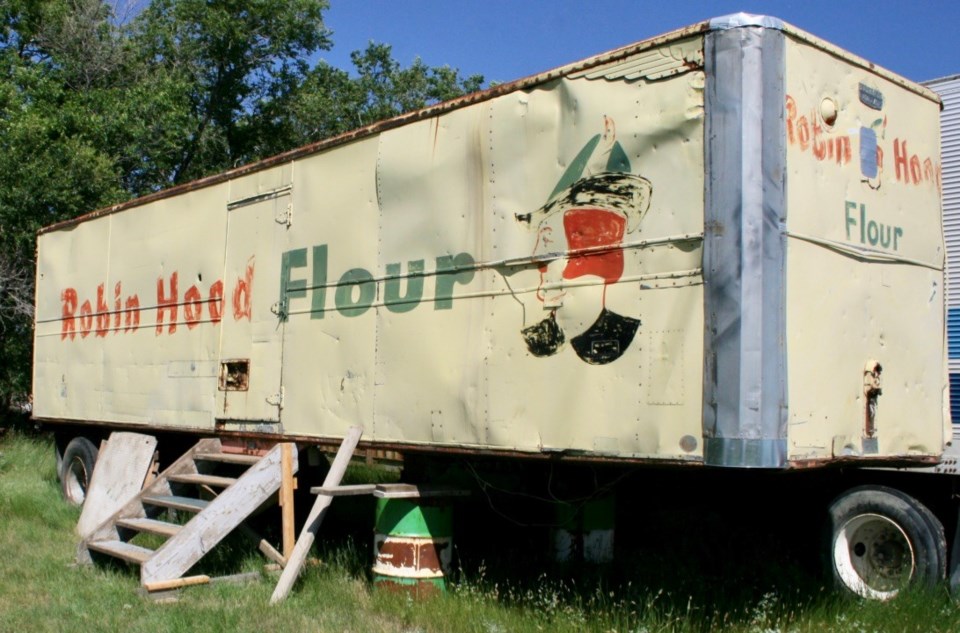A piece of Moose Jaw's agricultural history has become a display at the Sukanen Ship Pioneer Village and Museum.
A trailer once used to ferry 100-pound bags of Robin Hood Flour from the local mill was donated to the museum by Mary-Ellen Willis.
The trailer sat for years on the lot of a machine shop on High Street West. Recently Heather and Ebb Eby purchased the vacant machine shop and began to clear out the scrap.
Willis, a long-time member of the museum, learned what was happening and bought the trailer for $500, donating it to the museum.
“We're glad to have it,” said museum president Gord Ross. “Robin Hood is a big part of our history.”
Flour milling played an important role in the city's industrial sector development from 1900 when the first flour mill was built in the city.
The Robin hood Mill was built in 1909 by Francis Atherton Bean of Minneapolis. The company grew to develop several mills and facilities across Canada
In 1911, fire destroyed the mill but it was re-built.
By 1922 the character Robin Hood was painted on the mill face, located south of the Fourth Avenue Bridge.
The Robin Hood character with his bow and arrow was a landmark in Moose Jaw until Parrish and Heimbecker bought the vacant mill for a grain elevator.
Robin Hood had two facelifts. Painted to resemble King Edward VII, he was re-designed in 1936 and again in 1958 when it was decided he should wear green with a red hat and feather plume.
At its peak, the local mill produced 1,600 barrels of flour and 1,200 barrels of rolled oats a day with 200 employees.
The mill was closed in the mid-1960s striking a blow to a city that had seen its resource-related industries close one by one since the late 1950s.
Two factors cause the closure. A number of countries that had purchased flour from Robin Hood built their own mills to process the cheaper wheat and create jobs.
By the mid-1960s, women were entering the work force in larger numbers leaving less time for baking at home. Robin Hood was producing baking mixes at the end under the name Bick.
The Robin Hood brand lives on as part of Cargill's milling operations.
Ron Walter can be reached at [email protected]




